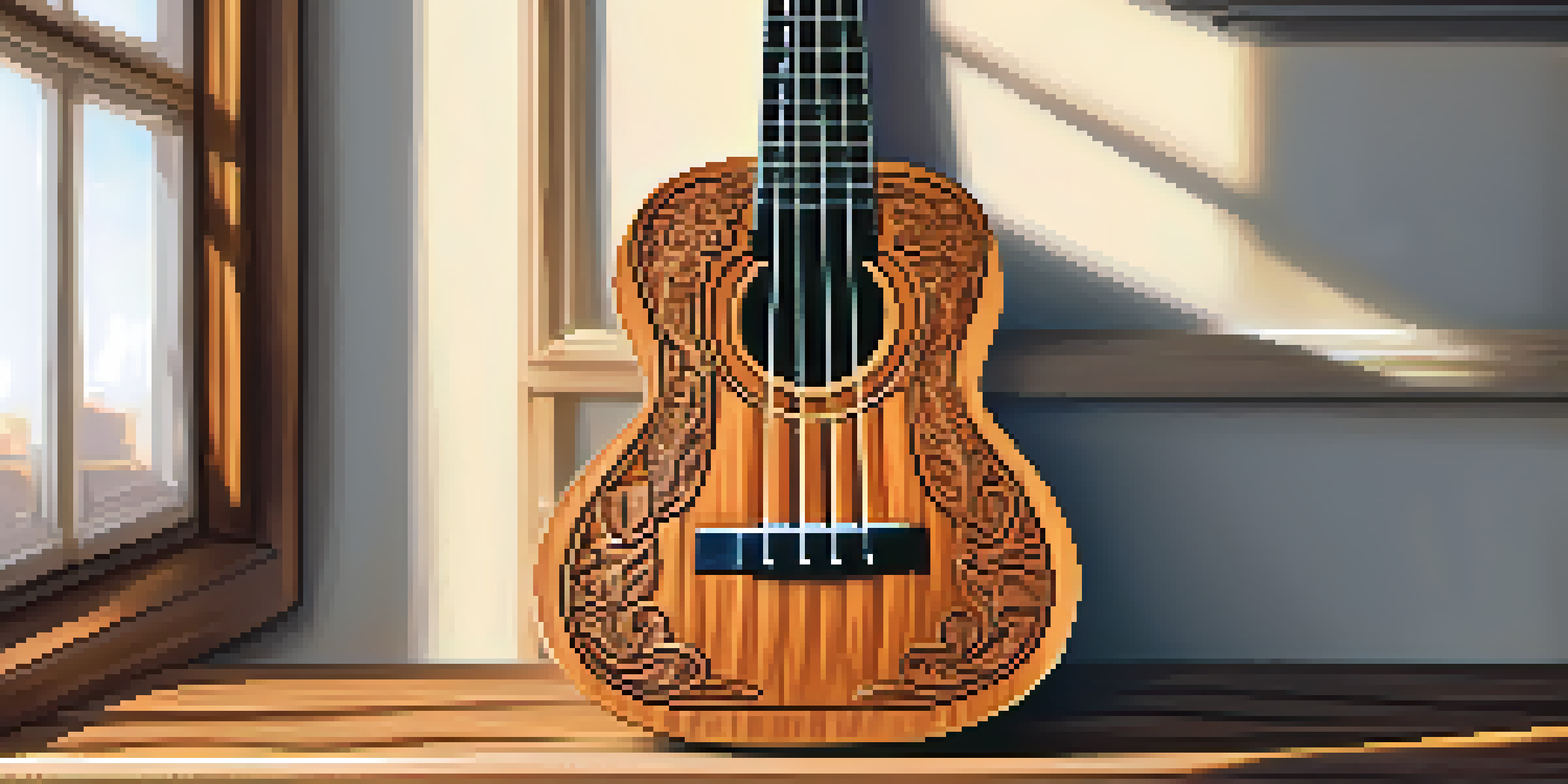A Beginner's Guide to Ukulele Tuning: Tips and Techniques

Understanding Ukulele Tuning Basics for Beginners
Before diving into the world of ukulele tuning, it's essential to understand what tuning means. Simply put, tuning is adjusting the pitch of each string to create the correct sound. For ukuleles, the standard tuning is G-C-E-A, from the top string to the bottom.
The beautiful thing about learning is that no one can take it away from you.
Each string must resonate at a specific frequency to ensure harmony when you play. This can be likened to tuning a piano; each key has a unique sound that contributes to the overall melody. Knowing the standard tuning helps you communicate effectively with other musicians.
Getting familiar with these basics sets the stage for a successful tuning experience. As you progress, you'll find that understanding these fundamentals makes it easier to experiment with different tunings and styles.
Essential Tools for Tuning Your Ukulele
To tune your ukulele effectively, you'll need a few essential tools. The most common tool is a clip-on tuner, which attaches to the headstock and detects string vibrations. This tool is user-friendly and perfect for beginners, providing quick feedback on pitch.

Another handy tool is a tuning app, which you can download on your smartphone. These apps are convenient and often include features like chromatic tuning and pitch detection. They allow you to tune on the go, ensuring you’re always ready to play.
Essential Tools for Tuning Ukuleles
Using tools like clip-on tuners and tuning apps can make the tuning process easier and more effective for beginners.
Lastly, don't underestimate the power of your own ears! While it might be challenging at first, learning to tune by ear can be a rewarding skill. It helps you develop a deeper musicality and a better understanding of how your ukulele sounds.
Step-by-Step Guide to Tuning Your Ukulele
Now that you have your tools ready, let's get into the nitty-gritty of tuning your ukulele. Start by plucking the first string (A) and use your tuner to check if it's in tune. If it’s flat, tighten the tuning peg; if it's sharp, loosen it until you hit the correct pitch.
Music can change the world because it can change people.
Once the A string is in tune, move on to the second string (E) and repeat the process. Afterward, tune the third string (C) and finally the fourth string (G). It might take some practice, but you'll find your rhythm as you go.
Always remember to double-check your tuning after adjusting each string, as tuning one can affect the others. With a little patience, you’ll soon be able to tune your ukulele quickly and confidently.
Common Ukulele Tuning Mistakes to Avoid
Even seasoned players can make tuning mistakes, so it's crucial to be aware of common pitfalls. One common error is tuning from a completely flat string. Instead, always tune up to the correct pitch to avoid slipping back down in tune.
Another mistake is neglecting to check your tuning after playing for a while. Changes in temperature or string tension can lead to your ukulele going out of tune, so it's a good habit to check before each session.
Avoid Common Tuning Mistakes
Being aware of common tuning mistakes can help you maintain pitch accuracy and improve your overall playing experience.
Finally, don’t rush the process. Take your time to ensure each string is perfectly in tune, as this greatly enhances your playing experience. With practice, you'll develop a more intuitive sense for when your ukulele is properly tuned.
The Importance of Regular Tuning for Your Ukulele
Like any musical instrument, regular tuning is vital for your ukulele's sound quality. Even if you think your ukulele sounds fine, slight variations in pitch can go unnoticed until you compare it to a properly tuned instrument. This is especially true if you're playing with others.
Regularly tuning your ukulele not only improves your sound but also helps prolong the life of your strings. When strings are out of tune, they experience unnecessary strain, which can lead to premature wear and tear. Keeping them in tune ensures a better playing experience.
Additionally, frequent tuning helps you develop a keen ear for pitch. As you tune more, you'll start to recognize when something sounds off, making your overall musicianship stronger.
Alternative Ukulele Tunings to Explore
Once you feel comfortable with standard tuning, it's exciting to explore alternative tunings! One popular option is D-tuning, which raises each string a whole step for a brighter sound. This tuning can give your playing a fresh twist and is great for creating unique melodies.
Another fun alternative is C-tuning, which drops the G-string down to an F. This tuning offers a warmer, deeper tone and is often used in Hawaiian music. Exploring different tunings can inspire new song ideas and broaden your musical horizons.
Explore Alternative Tunings
Experimenting with alternative tunings can inspire creativity and enhance your musical repertoire on the ukulele.
Remember, experimenting with different tunings is all about finding what resonates with you. Don't be afraid to try new things and see how they affect your playing style!
Final Tips for Ukulele Tuning Success
As you embark on your ukulele tuning journey, keep these final tips in mind. Always ensure your ukulele is in a comfortable environment, free from extreme temperatures or humidity. This stability helps maintain tuning consistency.
Practice makes perfect, so don't hesitate to tune your ukulele regularly, even if you're just playing for fun. The more you tune, the easier it will become, and soon you’ll be doing it without even thinking.

Lastly, enjoy the process! Tuning is a vital part of playing music, and embracing it will enhance your overall experience. With practice and patience, you’ll master the art of tuning your ukulele in no time.